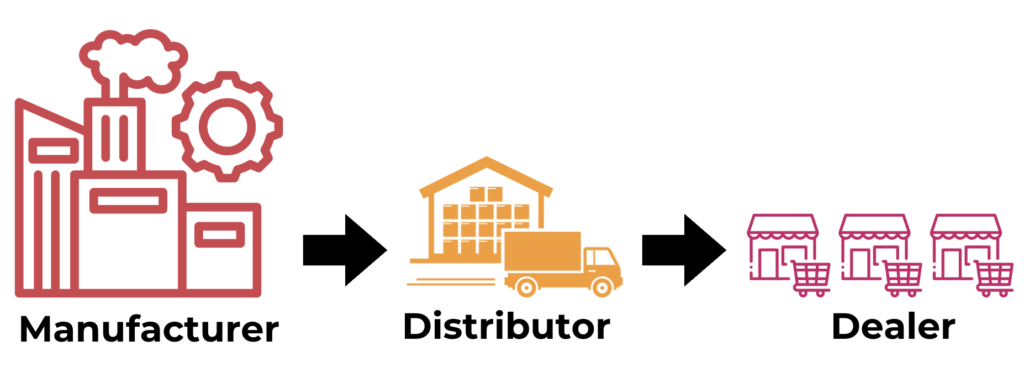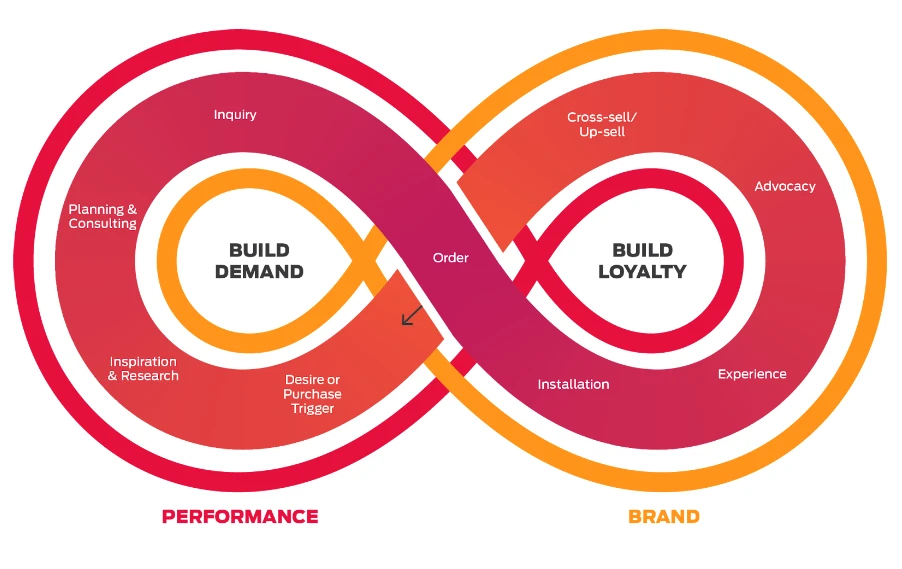The traditional marketing funnel that we all know and love has existed for 126 years. We marketers love to refer to it often when we are discussing marketing – “full funnel”, “top of the funnel”, and “bottom of the funnel.” While the intent of the “funnel” is solid, in today’s marketing landscape, it’s often too generic and has limitations that could be hindering your marketing plan.
At Ramey, we instead focus on a customer’s unique journey. We also know that not every journey is the same, so we view the journey with a category-specific perspective. If you aren’t thinking that way, then you might be stopping short of the full potential opportunity with your prospective customers. While we have an obvious focus on the key areas in the customer journey that marketing can impact (because marketing can’t impact them all), it’s important to understand and think through the entire journey. Why? Because as a strategic partner to our clients, we want to methodically pinpoint challenges and opportunities at each step to make the brand experience stronger. As we identify each step of the customer’s journey, we can then deeply analyze marketing strategies at each step – both brand strategies and performance-driven strategies. For instance, where is your brand currently having the biggest impact or where could the brand be having more impact?
As an example, one of Ramey’s core focus areas is the home space – appliances, plumbing fixtures, and more. For many in this category, products are purchased through a retailer (dealer) and go through a two-step distribution system.

In this category, we first have to think about what is the starting place of the customer journey. Is there an obvious needstate or desire? Is the purchase trigger based on a renovation or a new home build? Then we continue to follow the journey through research and inspiration gathering, understanding especially in the luxury/affluent space, there are often multiple influences including but not limited to a close interior designer and architect relationship. So in addition to using specific marketing and media channels to inspire the end-user (homeowner), we also have to think about specific marketing and media channels to inspire and be top of mind for those designers and architects as well.

Next, we follow the journey all the way through to the dealer/showroom visit. It is vital that the manufacturer (brand) has not only provided marketing materials and storytelling opportunities in the showroom, but that the sales team is adequately trained, inspired, and incentivized to represent the brand. This can be a make or break sales opportunity. Finally, both the install and product experiences are crucial. While this can be out of the brand’s control, they often still get the heat if there’s a less than desirable experience. That’s when offering best-in-class service and communication comes into play.
All of these steps then provide the opportunity for an ongoing relationship with the customer. If there’s a positive experience, brand advocacy marketing can come into play through customer loyalty programs, ongoing customer relationship management tactics, and more. This is also the point at which upselling and cross-selling opportunities exist, to solidify repeat purchases or further grow the customer relationship.
To summarize, it’s time to forget the traditional marketing funnel. Think intently about your customer’s unique journey. We go deep on this model, and allow it to inform our marketing communications plan across brand and performance marketing – all the way through the customer journey.
If you’re interested in learning how Ramey can help you with customer journey mapping, let’s talk.


